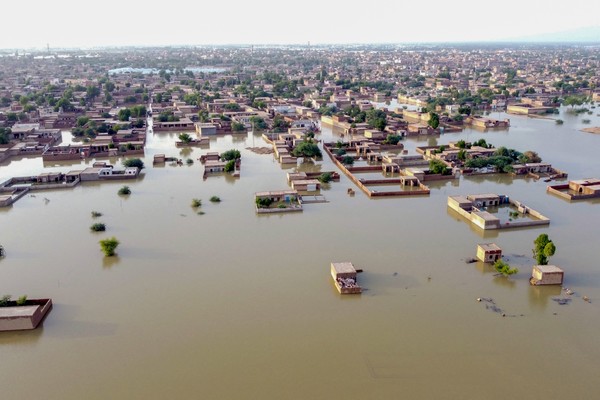This summer, many countries saw record-breaking extreme weather events that threaten the lives and livelihoods of many. South Korea’s and Pakistan’s flooding crises highlighted the need for resilient infrastructure, and with studies and leaders acknowledging the impact of global warming in worsening such extreme weather events, it is imperative for countries to push for climate policies — is enough being done?
“A monsoon on steroids” was how the UN Secretary-General, António Guterres, described Pakistan’s catastrophic flooding in August. Three times the average rainfall poured down on the country, taking the lives of around 1,500 people and damaging 1.7 million houses. However, the flooding seems to have also brought on more long-term stress on the country. As crops are destroyed and roads are inundated, there are rising concerns for food insecurity and malnutrition; threats of waterborne diseases and reduced access to health facilities put a strain on Pakistan’s already-fragile healthcare system; disrupted education systems could leave a damaging impact on the youth. The country is facing a dire humanitarian crisis that requires local, national, and international rehabilitation efforts.
This alarming problem isn’t unique to Pakistan this summer — Seoul also suffered major losses from the heaviest rains since 1920. This record-shattering monsoon season also shattered the assumption that the most luxurious neighborhoods are also the best equipped for natural disasters. Videos showcasing crumbling ceilings of subway stations and people in cars stranded afloat on the inundated road in Gangnam, one of the richest districts in Seoul, quickly went viral on social media. At least 13 people died and thousands of houses were damaged, with more than 500 people having to evacuate.

The main problem is that these extreme weather patterns have disproportionate effects. Pakistan contributes less than 1% to global carbon emissions yet experiences colossal damage from climate change. It is listed 8th on the 2021 Global Climate Risk Index, which indicates the level of vulnerability and exposure to extreme weather events. Both Pakistan and Seoul show how the less privileged population tends to be more hard-hit by natural disasters. President Yoon Suk-Yeol also acknowledged that “those facing difficulties making a living and those who are physically ill are bound to be more vulnerable to disasters.” Those living in slums or underground housing are more greatly affected by extreme weather events and often forced to evacuate or dislocate.
If a country’s infrastructure is not strong and resilient enough, it will forever be vulnerable to the impacts of climate change. Years of mismanagement of the country’s water resources by the Pakistani government and the lack of properly built infrastructure fueled the crisis. Many illegally or poorly built structures could not withstand the effects of devastating flash floods. Some buildings were even constructed on dangerous sites that were affected during previous floods. In South Korea, “banjiha”, or semi-underground home, provides a cheaper alternative to housings that are notoriously expensive in Seoul. However, this August, it was apparent that underground structures that provide shelter one day will be the first place to turn into a nightmare the next day that will last long even after the rain ends. Seoul announced that it will undertake measures to ultimately get rid of banjiha housings and prevent more underground residences from being built.
However, as much as a country can aim to better protect its population by investing more toward bettering the city infrastructure, it will only amount to closing the barn door after the horse has bolted if the root cause is not tackled. According to the Intergovernmental Panel on Climate Change (IPCC), many East Asian countries are subject to more intense rainfall and stronger summer monsoon seasons — and they are only to become worse and more unpredictable due to global warming. Acknowledging such, countries should also invest more into climate policies to minimize the risk of unpredictable and extreme weather events like those we saw this summer. It is time to invest more into the struggle to close the barn door.

